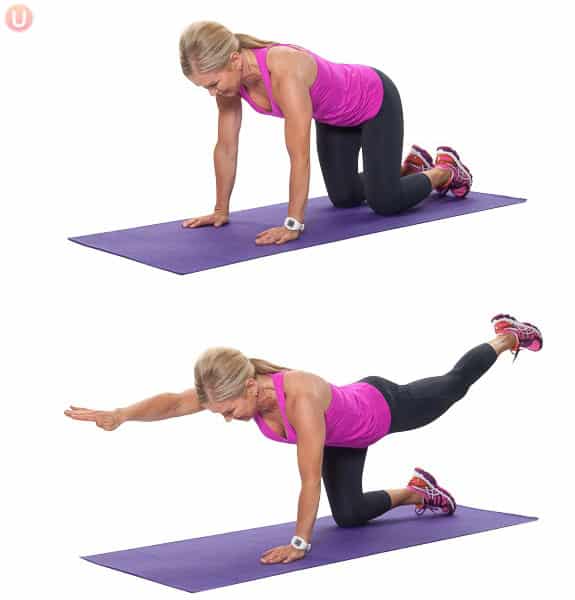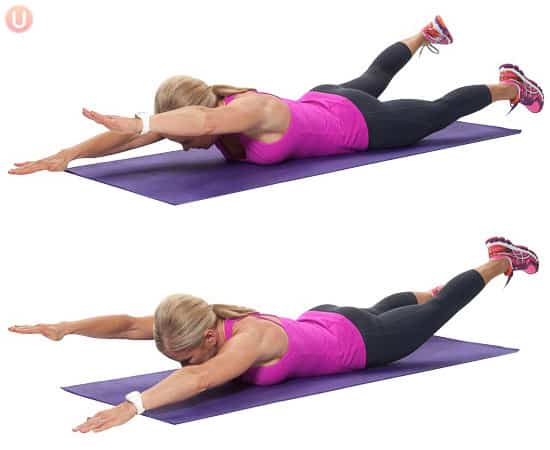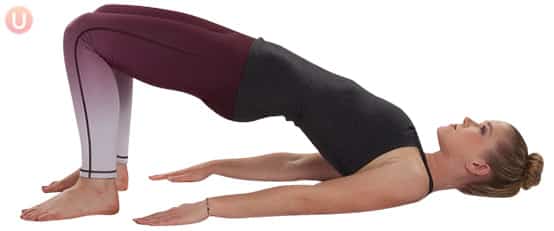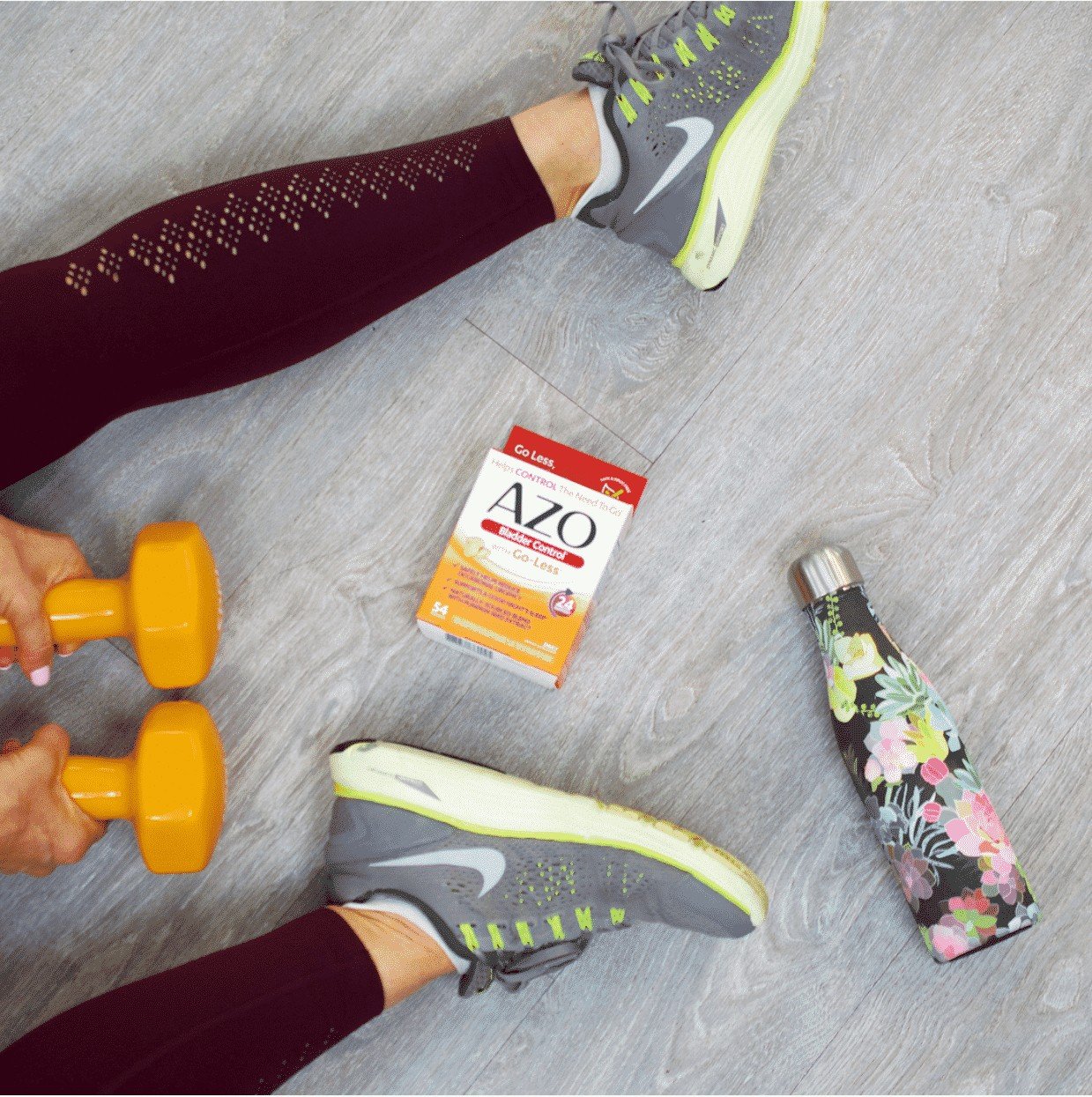This post contains affiliate links. Please see our disclosure policy.
Millions of people suffer from occasional bladder leakage, urgency, and feeling the need to go frequently, mostly after childbirth. You might be hard-pressed to find a mother who hasn’t experienced some degree of this, and unfortunately, symptoms can appear either immediately after birth or years later.
Whether due to a workout, sneezing, or laughing, let’s learn how to stop peeing yourself, female bladder leakage and solutions to get control.
Why Do I Pee When I Workout?
I was absolutely shocked the first time it happened to me. I was 26 years old, had just had my first child and I was teaching a group fitness class.
I was wearing a leotard and lime green bootie shorts (90’s fashions, what can I say) and I realized I was leaking pee every time I did a jumping jack (not great when wearing lime green). I was mortified.
Was not being able to control my bladder my new normal? What was wrong with me?
I went on to learn that it’s actually quite normal to leak some pee during high-impact activities like working out after going through pregnancy and childbirth. This is because these experiences weaken your pelvic floor or sphincter muscle, and place increased pressure on your bladder.
The good news is though, it doesn’t have to stay like that. Fast forward to my 50s and I’m happy to say, I did get back my pelvic floor muscles back (many years ago, I should mention) and I haven’t spent the last 25 years peeing myself during workouts.
So, let’s dive in and learn how to stop peeing yourself.
Female Bladder Leakage: Solutions To Get Control
Occasional bladder leakage can be frustrating and, at times, embarrassing. While it’s nothing to be ashamed of, it can certainly be irritating. Here is the good news: we have solutions to get control.
Believe me, after that first instance of peeing myself, I knew I had some work to do and thankfully, I have been able to maintain my pelvic floor muscles throughout the years with these suggestions below.
Here are how to stop peeing yourself during your workouts!
1. Learn How To Do A Kegel
The first step in dealing with occasional bladder leakage is all about identifying and engaging your pelvic floor muscles. To do this, you’ll practice a kegel. You may have heard of this incognito move, as it’s easy to perform throughout the day without anyone being the wiser.
Never done one? We’ll explain how.
- To identify your pelvic floor muscles, engage the muscles you would to stop urination midstream. These are your pelvic floor muscles.
- Try tightening and relaxing those muscles for five seconds at a time; then work up to 10 seconds at a time.
- Breathe freely as you tighten and relax.
You’re kegel-ing, baby! The Mayo Clinic says kegel exercises can be done during pregnancy or after childbirth to try and prevent urinary incontinence.
Now that you know how to kegel, aim for at least three sets of 10 Kegels per day. Remember, they are an invisible exercise so you can do them any time, anywhere!
Do them at a stoplight. Do them washing dishes. Do them standing in line at a store.
Done consistently, the kegel can significantly strengthen your pelvic floor muscles and is one of the most important strategies for how to stop peeing yourself.
2. Engage Your Pelvic Floor Muscles In Pilates-Based Exercises
Now that you know how to engage your pelvic floor muscles, practice engaging them through other exercises. When you engage your pelvic floor in the following Pilates-based exercises, it can not only help with your occasional bladder leakage issues, but improve your sexual health and core stability, too.
Pilates is based on movements that practice core control and stability.
Every Pilates exercise uses carefully controlled movements, and as such, it’s a natural form of exercise to turn to if you want to strengthen your pelvic floor.
Here are some other movements to gain back bladder control.
A) Lie on your back with knees bent and feet flat on the floor close to glutes. Place arms flat on the floor next to you, tucking your shoulders under your back—align knees with hip bones.
B) As you inhale, press palms down as you lift your hips high, inhale, and squeeze your pelvic floor. Hold for 10 seconds.
C) Release your hips down, exhale, and release your pelvic floor.

B) Reach one arm long, drawing in the abdominals and releasing the pelvic floor as you extend the opposite leg long behind you for a count of 10.
A) Lie on back with knees bent at 90 degrees and arms lengthened alongside calves.
B) Inhale, engaging the pelvic floor and stretching your arms behind your head and legs, straight to a diagonal position in front.
C) As you exhale, release your pelvic floor muscles and circle arms back to legs while drawing knees back in to the 90 degree angle.

B) Lift your arms and legs off the floor and keep your nose in a hover above the mat. Flutter your arms and legs quickly, moving from the hips and shoulders (not the knees and elbows). Count and breathe as you flutter like this: Inhale-2-3-4, Exhale-2-3-4 and try to perform for 30-60 seconds.
3. Take A Supplement
Yes, I am a huge fan of Kegels and exercises to strengthen your pelvic floor, but I also know that depending on your personal situation, occasional bladder leakage may remain or you may want help in the meantime while you’re building up those muscles.
I know lots of women my age who either from multiple vaginal deliveries or from that wonderful friend menopause have had a hard time completely tightening up their stretched-out pelvic muscles.
So if you’ve been practicing your Kegels, but are still unsure how to stop peeing yourself, it may be time to try AZO Bladder Control®. It’s a safe, drug-free supplement that contains a naturally sourced blend to help reduce occasional bladder leakage from laughing, coughing, sneezing and exercise (yes, please!).
So next time you head to your cardio workout or burst into laughter, you can have a reliable resource to prevent you from an embarrassing situation.
I love that it’s naturally sourced; it’s made of pumpkin seed extract and soy germ extract and helps reduce the sudden urge to urinate and supports your bladder strength.
The female body is amazing and childbirth is miraculous but you don’t need to think about one more thing afterward! If you’re experiencing female bladder leakage, be sure to try these solutions to get control.
Don’t be embarrassed by peeing yourself during your workouts and above all, see your doctor if your symptoms are severe.






Great article Chris and here’s a breakthrough exercise to try – the Dry Swan Exercise with a free app called ‘Dry Swan Bladder Trainer’ available on Google Play and iTunes which has a video and illustrations explaining the exercise. This exercise is a distraction technique which gives precious time to those women suffering from urge incontinence. Ongoing practise will strengthen the area and help to stop urge and stress incontinence altogether.
Great post! I’m not stress incontinence, but I’m fully incontinent and I wear diapers 24/7 so I’m basically in even worse situation, but I know a few people with stress incontinence – the trick is that I have only started to meet people with similar to mine problems once I have finally came clean and told all my friends about my issues. I was very socially isolated and I was afraid of telling anyone about my problems when I was in college and this has set my career and life backwards few years, but I have overcame the fear and those problems that I had. So as I said, I know a few people that are stress incontinence and we have talked a lot about different solutions and possibility. I love talking with other people that are experiencing similar things to me as we understand each other perfectly, exchanging ideas is very exciting part. We’ve both agreed upon training kegels as the best exercise to increase your bladder’s control. Unfortunately as I’m fully incontinent already it is impossible for me to have any impact on my control as for quite a long time already I have none, but for those people I know it had really great impact after just a few months and helped them improve their stress incontinence.
On top of that I found being physically active and eating healthy, not smoking or drinking excessive amount of alcohol to be very helpful as well. As we all know during physical activity people with stress incontinence tend to leak more due the stress put on their bladder, but both me – made me leak a bit less often and two friends with stress incontinence found working out and healthy lifestyle to be totally an game changer here. I would also add, that it’s very important to wear comfortable diapers – especially for the beginners. I supply enough from hexanow.com for past 6 months as they are really cheap and their quality is OK as well, but I’m open for other brands. So if anyone is on budget and wants a tested already product, this is what I would recommend. For women obviously mentioned in the article pads will probably make the best choice, also those are some great exercises as well – I haven’t known them all, so I will definitely share it with my friends. Thanks!
OMG I love this! I had posted on my own little fitness page that peeing or having that urge to pee during a workout is just something we deal with at times. I of course blame my children…lol!! But in all seriousness I appreciate this article because it said it “out loud” so women don’t have to be embarrassed!